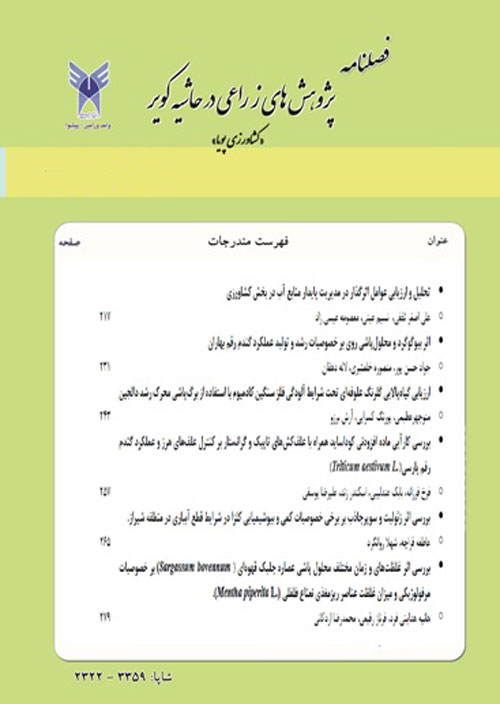Effects of Municipal Wast Compost and Sulfur coated Urea on Quantitative Characteristics of Cotton (Gossypium hirsutum L. var Varamin)
Author(s):
Abstract:
The growing problem of urban waste generation is threatening public health, and if not cared, irreversible damages will be made to our environment, To solve this problem, we can then convert municipal waste into compost as organic fertilizer used in agricultural fields. This study was carried out to determine the effects of combined municipal city waste with sulfur-coated urea fertilizer on cotton properties of cultivar Varamin. The experiment design was split plot in form of CRB with sixteen treatments and three replications at agricultural research and natural resources center of Tehran province in Varamin. The treatments included: Compost at four levels (0, 20, 30, and 40 tons per hectare) as main plots and sulfur-coated urea fertilizer with four levels (0, 33%, 66%, and 100% of fertilizer needed) as sub plots. Results showed that the effects of sulfur-coated urea treatments on plant height, reproductive branches and effects of compost treatments on number of nodes and boll number was significant at 5% and 1% level. Data showed that the highest boll number and yield were obtained by use of 40 t/hac Municipal soiled waste compost (MSWC) and the highest plant height, reproductive branches and 100-seed weight were obtained by sulfur-coated urea fertilizer with level of 66% of fertilizer needed. Thus, despite the excellence of some other properties in use of other levels of fertilizer in treatments, because of insignificancy of them, combined use of compost and sulfur-coated urea with rate C40N66 is recommended.
Keywords:
Language:
Persian
Published:
Iranian Journal of Dynamic Agriculture, Volume:9 Issue: 4, 2013
Page:
349
https://magiran.com/p1506391


